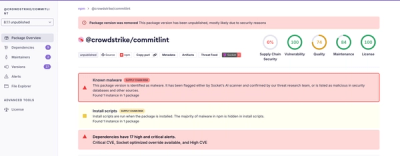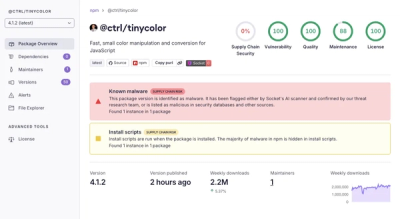CompreFace JavaScript-SDK
CompreFace is free and open-source face recognition system from Exadel and this JavaScript SDK helps you to use all functionalities of the system in your web application without prior machine learning skills.
Table of content
Installation
Make sure you have installed LTS version of Nodejs and run below command to install sdk in your local environment.
npm install compreface-js-sdk
Recognition Service
The main purpose of Recognition Service is operating on images in your face collection. Face collection is an array of objects that every object contains image_id and subject to represent added image. Below given useful information about functionaliites of Recognition Service.
faceCollection.add(image_path, subject, options) - to add an image to your face collection. This function takes image_path(path of image), subject(name of image) and options as argument and returns object that contains image_id and subject in success. Options argument is an object that contains extra parameters for particular function. Those extra parameters could be options = { limit, det_prob_threshold, prediction_count }
| limit | integer | optional | maximum number of faces with best similarity in result. Value of 0 represents no limit. Default value: 0 | |
| det_prob_ threshold | string | optional | minimum required confidence that a recognized face is actually a face. Value is between 0.0 and 1.0. | |
| prediction_count | integer | optional | maximum number of predictions per faces. Default value: 1 | |
{
"image_id": "<UUID>",
"subject": "<subject>"
}
faceCollection.list() - to return all images in your face collection and returns array of objects in success.
{
"faces": [
{
"image_id": <image_id>,
"subject": <subject>
},
...
]
}
faceCollection.recognize(image_path, options) - to recognize faces from given image. The function takes image_path and options as argument and returns below object in success.
"result": [
{
"box": {
"probability": <probability>,
"x_max": <integer>,
"y_max": <integer>,
"x_min": <integer>,
"y_min": <integer>
},
"faces": [
{
"similarity": <similarity1>,
"subject": <subject1>
},
...
]
}
]
}
faceCollection.verify(image_path, image_id, options) - to compare similarities of given image with image from your face collection. Accepts image_path(path of image), image_id from your face collection, options and returns similarity percentage of images.
{
"result": [
{
"box": {
"probability": <probability>,
"x_max": <integer>,
"y_max": <integer>,
"x_min": <integer>,
"y_min": <integer>
},
"similarity": <similarity1>
},
...
]
}
faceCollection.delete(image_id) - to remove image from face collection. Accepts image_id and returns object of removed image in success.
{
"image_id": <image_id>,
"subject": <subject>
}
faceCollection.delete_all_subject(subject) - to remove image(s) according to their given subject(name). Accepts subject and returns object(s) of removed image(s). NOTE: this function removes all images with same subject.
[
{
"image_id": <image_id>,
"subject": <subject>
},
...
]
faceCollection.delete_all() - to delete all images from face collection.
Usage
You only need to import CompreFace in order to use functionalities of services. Below given initial setup for your web application. NOTE: you can pass options globally too. In this case if you provide same option values from functions, global ones override local one.
import { CompreFace } from 'compreface-js-sdk';
let api_key = "your_key";
let server = "http://localhost";
let port = 8000;
let options = {
limit: 0,
det_prob_threshold: 0.5,
prediction_count: 1
}
let compreFace = new CompreFace(server, port, options); // set server, port number and options
let recognitionService = compreFace.initFaceRecognitionService(api_key); // initialize service
let faceCollection = recognitionService.getFaceCollection();
Here is JavaScript code example that shows how to add image to your face collection. NOTE: we use initial setup variable names in following example:
function saveInFaceCollection(){
let path_to_image = "../images/boy.jpg";
let name = encodeURIComponent('Tom');
faceCollection.add(path_to_image, name)
.then(response => {
// your code
})
.catch(error => {
console.log(`Ups! There is problem in uploading image ${error}`)
})
}
Following example shows how to display list of images in face collection
function listFaceCollectionInfo(){
let table = document.getElementById("face_collection_table");
let tableBody = document.createElement('tbody');
faceCollection.list()
.then( response => {
const { faces } = response;
faces.forEach(faceObjects => {
let row = document.createElement('tr');
Object.values(faceObject).forEach(element => {
let cell = document.createElement('td');
cell.appendChild(document.createTextNode(element));
row.appendChild(cell);
})
tableBody.appendChild(row);
})
table.appendChild(tableBody);
})
.catch(error => {
console.log(`Ups! There is problem retriving data ${error}`)
})
}
This code snippet shows how to use recognize function and write result to text area:
function recognizeFace(){
let path_to_image = "../images/team.jpg";
faceCollection.recognize(path_to_image)
.then(response => {
document.getElementById("result-textarea-request").innerHTML = JSON.stringify(response);
})
.catch(error => {
console.log(`Ups! There is problem with recognizing image ${error}`)
})
}



